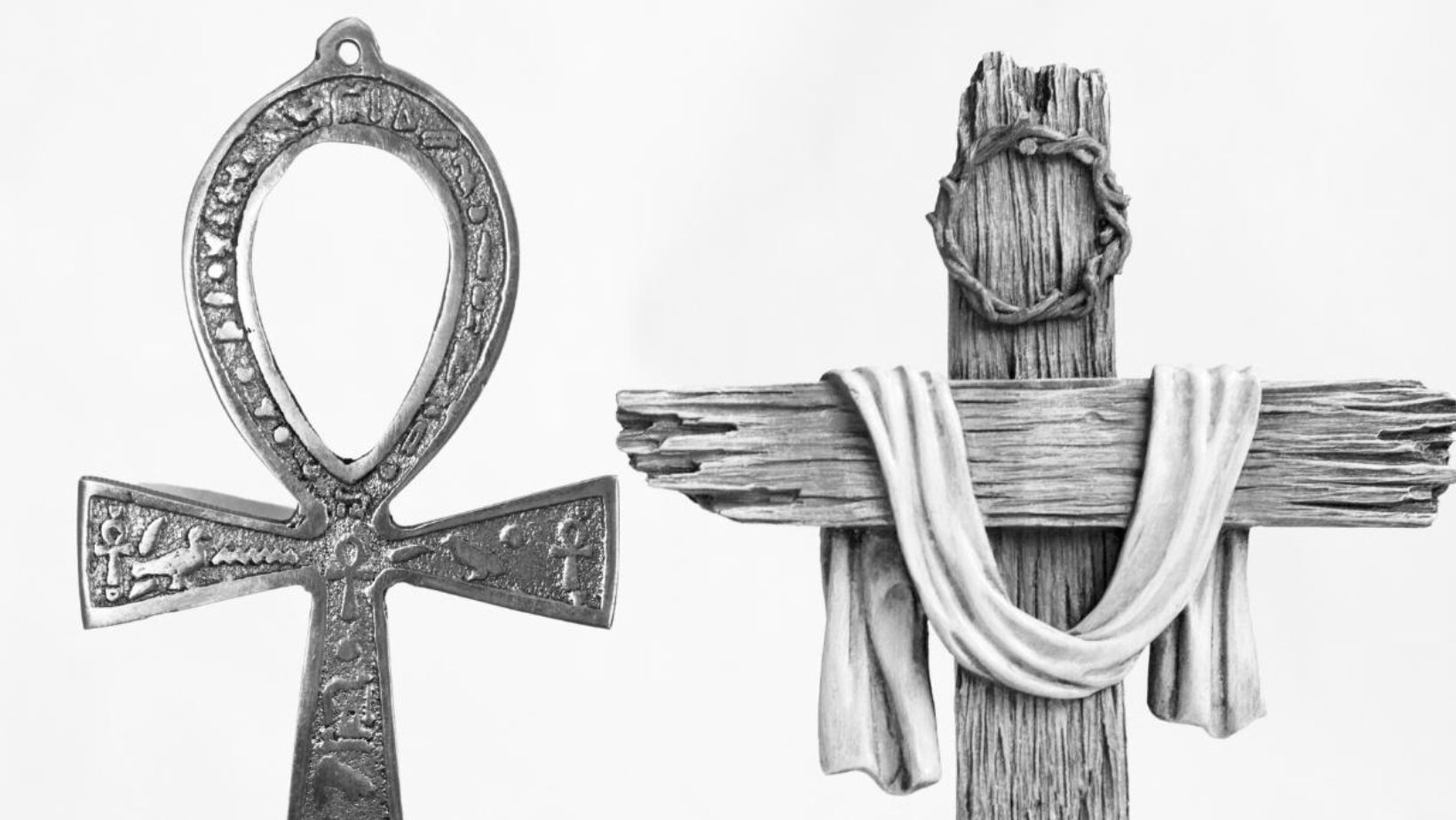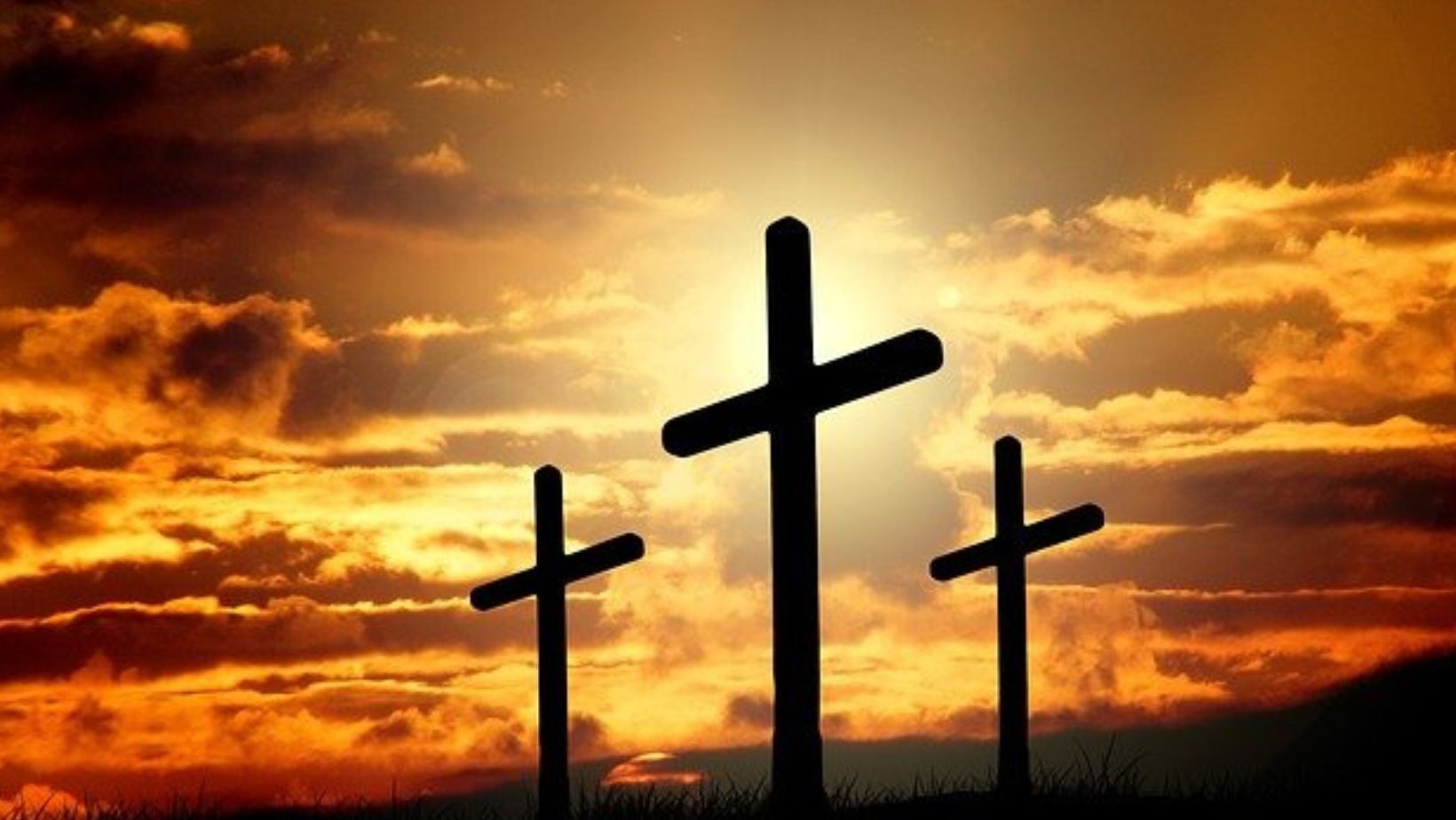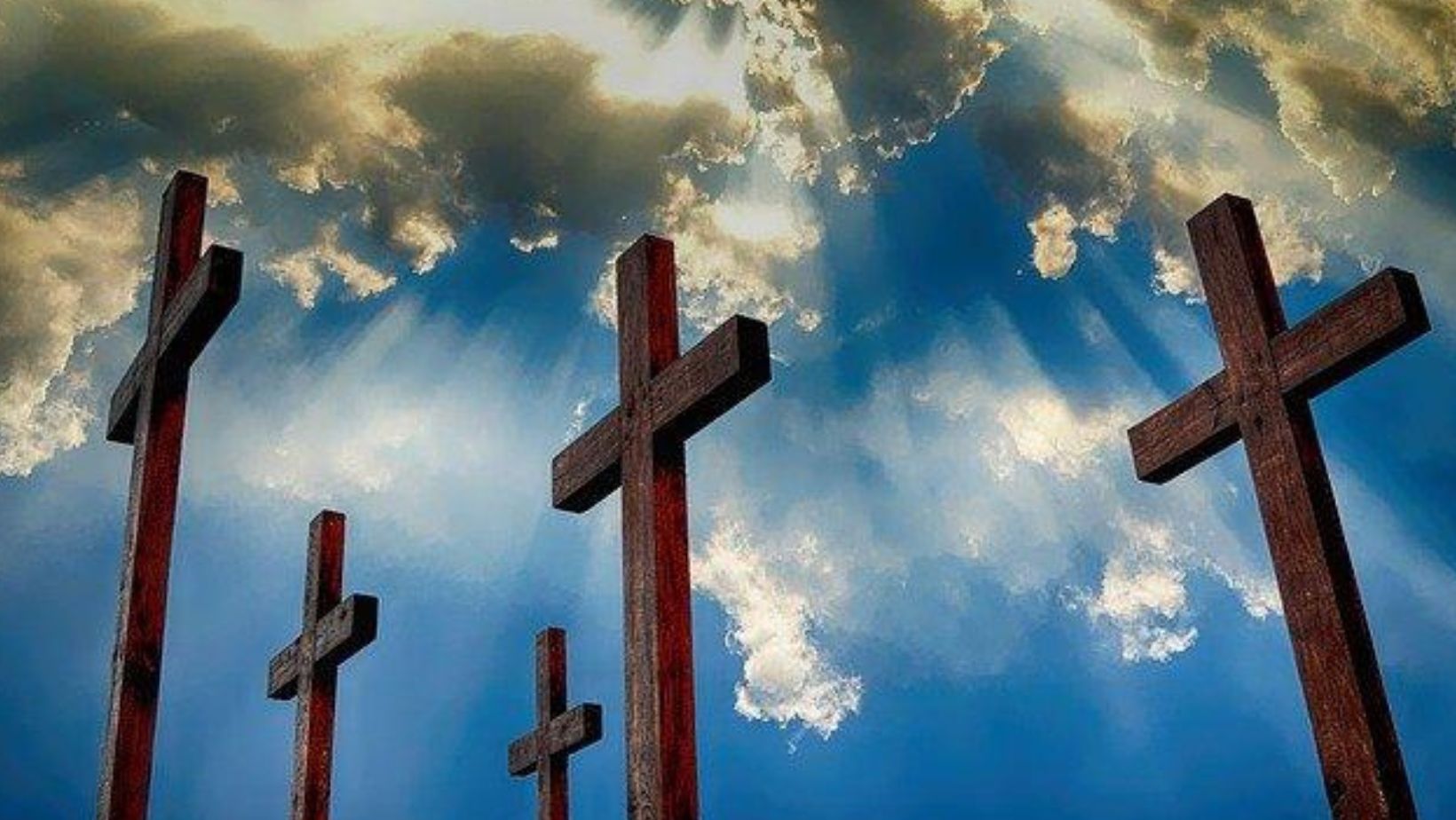The cross is one of the most recognized symbols in the world. It transcends cultures and religions, carrying deep meaning across different societies. For many, it represents faith, hope, and sacrifice, while for others, it embodies various beliefs and traditions. From ancient civilizations to modern times, the cross has adapted and evolved, yet its significance remains strong. In this exploration, we will dive into the rich history of cross symbolism, uncovering its importance in various cultures and religions. Join us as we unravel the layers of meaning behind this powerful emblem.
The Cross Symbolism in Ancient Civilizations

The cross has a rich history that dates back to ancient civilizations. In Mesopotamia, it was often used as a symbol of the four cardinal points. This represented the connection between the heavens and the earth. Similarly, ancient Egyptians employed cross-like symbols, such as the ankh, which symbolized life and immortality.
In pre-Christian cultures, the cross carried various meanings. For the Celts, it represented the intersection of the physical and spiritual worlds. The Celtic cross is a notable example, featuring a circle that signifies eternity. Meanwhile, in ancient Greece, the cross was linked to the sun, symbolizing light and energy.
These early uses laid the groundwork for the cross’s later significance in Christianity. The symbol transitioned from representing diverse meanings in ancient cultures to becoming a central emblem of faith. Understanding its ancient roots helps illuminate the cross’s evolving significance through the ages.
The Christian Cross Symbolism: A Central Symbol of Faith
The cross is the most recognizable symbol of Christianity. Its significance stems from the crucifixion of Jesus Christ, which took place around 30-33 AD. In this context, the cross represents the ultimate sacrifice made for humanity’s sins. It serves as a powerful reminder of God’s love and redemption.
The crucifixion itself was a brutal execution, intended to humiliate and punish. However, Christians believe it led to Jesus’ resurrection three days later, affirming His divine nature. This event transformed the cross from a symbol of death into one of hope and eternal life.
Over time, the cross became a central symbol in Christian worship and art. It is often displayed in churches and worn as jewelry by believers. This widespread use underscores its importance in representing faith, salvation, and the promise of resurrection. The Christian cross not only signifies suffering but also the triumph of life over death, embodying the core beliefs of the faith.
Variations of the Cross Symbolism in Christianity
The cross has many variations, each with unique symbolic meanings in Christianity. The Latin cross is the most recognized, characterized by a longer vertical beam. It represents the crucifixion of Jesus and is a symbol of sacrifice and salvation.
The Greek cross features arms of equal length and symbolizes the four directions of the earth. This form emphasizes Christ’s universal reach and His role in the salvation of all humanity.
The Celtic cross, known for its circular ring, combines a cross with a circle. This symbolizes eternity and the connection between heaven and earth. It reflects the deep spirituality of Celtic Christianity.
The Patriarchal cross, with two crossbeams, represents the authority of the church. The upper beam signifies the inscription above Jesus, while the lower represents the idea of the dual nature of Christ.
Each variation of the cross serves as a powerful reminder of Christian beliefs and values. They encapsulate different aspects of faith, unity, and divine love, enriching the spiritual landscape of Christianity.
Cross Symbolism in Other Religions

The cross symbol appears in various forms across multiple religions, each carrying distinct meanings. In Hinduism, the cross can be seen in the form of the Swastika, an ancient symbol representing good fortune, prosperity, and the cyclical nature of life. However, its use in modern contexts has been controversial due to associations with hate groups.
In Buddhism, the cross is not a primary symbol, but the Dharma Wheel, which has a cross-like shape, represents the teachings of Buddha. It signifies the path to enlightenment and the cycle of birth, death, and rebirth.
In Islam, the cross itself is not a symbol of worship. Instead, the star and crescent serve as the predominant symbol, representing guidance and divine light. While these symbols differ from the Christian cross, they all reflect spiritual guidance and the search for truth.
Comparing these symbols highlights how different cultures use cross-like forms to express profound spiritual ideas. While the Christian cross represents sacrifice and redemption, symbols in other religions emphasize concepts like cyclical existence and moral direction, showing the rich tapestry of global spirituality.
The Cross Symbolism in Art and Literature
The cross has been a prominent symbol in art for centuries. In famous artworks like “The Crucifixion” by Diego Velázquez, the cross serves as a powerful representation of sacrifice and faith. This painting, like many others, highlights the emotional depth of Christ’s suffering and the significance of redemption. Artists use the cross to convey themes of hope, salvation, and divine love.
In literature, the cross appears as a symbol of moral conflict and spiritual awakening. In Dante Alighieri’s “Divine Comedy,” the cross symbolizes the path to salvation. It represents the struggles of the soul seeking divine grace. Similarly, in John Milton’s “Paradise Lost,” the cross signifies both the fall and the promise of redemption.
These representations in art and literature show how the cross transcends its original context. It becomes a versatile symbol of human experience, suffering, and the quest for meaning. The cross invites viewers and readers to reflect on their own beliefs and the nature of sacrifice, making it an enduring element in cultural expressions.
Cultural Significance of the Cross Symbolism
The cross has held deep cultural significance throughout history, symbolizing power and authority. In many societies, it represents divine protection and legitimacy. This symbolism has often been adopted by rulers and institutions to assert their dominance. For instance, many monarchies in Europe used the cross in their heraldry to signify divine right and governance.
Additionally, the cross appears in flags, emblems, and national symbols, illustrating its broad cultural relevance. The Flag of England, for example, prominently features the Cross of St. George. This cross symbolizes bravery and national identity. Similarly, the Flag of Switzerland includes a white cross on a red background, representing peace and unity.
Beyond its national use, the cross also signifies various social movements and ideologies. It has been embraced by groups advocating for justice, freedom, and human rights. In this way, the cross transcends religious boundaries, becoming a universal emblem of hope and resilience. Its multifaceted presence in culture underscores its lasting impact across different societies and eras.
Modern Interpretations of the Cross Symbolism

In contemporary art and pop culture, the cross has taken on various new meanings. Artists often use it to explore themes of spirituality, identity, and social justice. For instance, works by artists like Andres Serrano challenge traditional representations of the cross, sparking discussions about faith and culture. This modern reinterpretation encourages viewers to reflect on their beliefs.
In pop culture, the cross appears in music, fashion, and film. Many musicians use cross imagery to express rebellion or spiritual themes, broadening its cultural significance. In fashion, designer brands often incorporate cross motifs into clothing and accessories, making it a trendy symbol that transcends its religious roots.
Additionally, the cross serves as a tool for activism. Many movements adopt the cross to advocate for various causes, including LGBTQ+ rights and racial equality. This shift illustrates how the cross’s meaning has evolved, reflecting the complexities of modern society. Today, it stands not just as a religious symbol but also as a canvas for personal and political expression, connecting deeply with contemporary audiences.
The Cross Symbolism in Social Movements
The cross has played a significant role in various social and political movements throughout history. It often serves as a symbol of hope and resistance, particularly in the context of marginalized communities. For example, during the Civil Rights Movement in the United States, the cross represented faith and resilience against oppression. Leaders like Martin Luther King Jr. invoked Christian imagery to inspire unity and perseverance.
In Latin America, the cross has been embraced by liberation theology. This movement emphasizes social justice and human rights, using the cross as a powerful emblem of struggle against poverty and inequality. It connects faith with activism, encouraging believers to fight for the marginalized.
Additionally, the cross is significant in LGBTQ+ rights movements. It is often reinterpreted to symbolize inclusion and acceptance, countering historical discrimination. Many activists reclaim the cross, transforming it into a beacon of love and diversity.
Overall, the cross serves as a multifaceted symbol in social movements. It represents not only religious faith but also the enduring quest for justice, identity, and resistance against oppression. This adaptability continues to inspire hope across diverse communities.
Personal Reflections on Cross Symbolism

The cross holds deep personal meaning for many individuals, often shaped by their experiences and beliefs. For some, it symbolizes faith and salvation, reminding them of the teachings of love and forgiveness. Others may see the cross as a representation of resilience, embodying strength in the face of life’s challenges. These personal interpretations can create a profound connection to the symbol.
In everyday life, the cross continues to inspire people in various ways. Many wear it as jewelry, using it as a source of comfort and strength. It serves as a reminder of their faith and values, guiding their actions and decisions. Others incorporate the cross into their art, expressing their feelings and experiences through creative interpretations.
The cross also plays a role in communal rituals, such as weddings and memorials. It provides a sense of unity among individuals who share similar beliefs. Through these personal and communal expressions, the cross remains a powerful symbol of hope, faith, and identity. Its ability to resonate with diverse audiences ensures its relevance in contemporary society.
Conclusion: Cross Symbolism Through the Ages: An In-Depth Exploration
The cross has served as a powerful symbol throughout history, transcending time and cultures. Its significance spans ancient civilizations, Christianity, and various world religions, embodying themes of faith, sacrifice, and identity. In modern life, the cross remains relevant, appearing in art, literature, and social movements, where it symbolizes hope and resilience. As people continue to find personal meaning in the cross, its legacy endures, reminding us of our shared humanity and the diverse ways we seek understanding and connection in our lives.
FAQs About Cross Symbolism Through the Ages: An In-Depth Exploration
What are some historical examples of the cross used as a symbol in ancient civilizations?
Ancient civilizations, such as those in Mesopotamia and Egypt, used the cross in various contexts. For example, the ankh in Egypt represents life, while the four corners of the world are often depicted in cross-like forms in Mesopotamian art.
How does the cross function as a symbol of hope in social movements?
In various social and political movements, the cross has symbolized hope and resistance. Activists have used it to unite people under a common cause, emphasizing themes of justice, equality, and faith in a better future.
What is the significance of the cross in non-Christian religions?
In Hinduism, the cross can represent the intersection of the physical and spiritual realms, while in Buddhism, it symbolizes the four noble truths. In Islam, while the cross is not a primary symbol, it appears in cultural contexts that involve discussions of faith and community.
How has the portrayal of the cross changed in modern art?
Contemporary artists often reinterpret the cross to challenge traditional views, incorporating it into works that address themes of identity, societal issues, and personal faith. This evolving portrayal reflects diverse perspectives on spirituality and human experience.
What role does the cross-play in personal spirituality today?
For many individuals, the cross serves as a personal emblem of faith and spiritual journey. It can inspire reflection, devotion, and a sense of connection to broader themes of sacrifice and redemption in one’s life.
